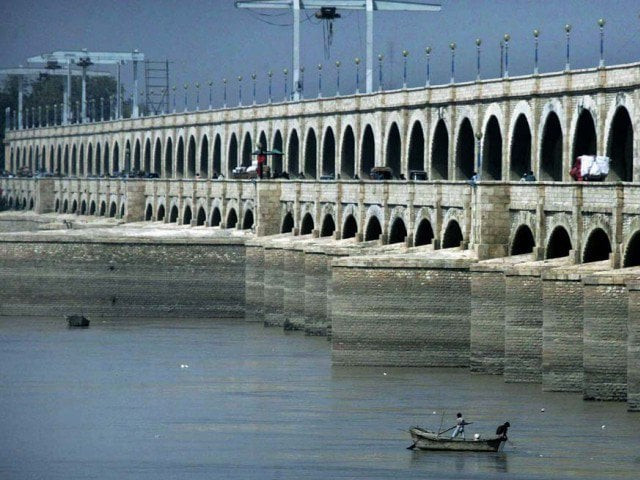Chief Minister of Sindh Murad Ali Shah gave a briefing on Monday detailing the flow of water that is set to hit Sindh in the coming days. According to the National Disaster Management Authority(NDMA), 800,000 to 1.1 million cusecs of water are expected to enter the province.
The Chief Minister noted that water above 900,000 cusecs is classified as a “super flood,” and emphasized the need to assess the maximum possible water inflow at any given time and prioritise saving lives.
The minister has instructed authorities to prepare for a super flood and ensure the safety of the barrages. Reviewing Guddu and Sukkur Barrages, he highlighted that there is a risk of breaches at five to six points along the bank. Murad Ali Shah reassured that since the 2010 floods, the Sindh government has raised the height of the bunds by an average of six feet.
Read: Sindh braces for ‘super floods’ as CM reviews Guddu Barrage defenses
Water levels at major barrages have shown a slight decrease over the past 24 hours, with Guddu Barrage down by 4,000 cusecs and Sukkur Barrage by 15,000 cusecs, the Sukkur Barrage Control Room reported.
Current inflows stand at 318,000 cusecs at Guddu, 252,000 cusecs at Sukkur, and 273,000 cusecs at Kotri. Authorities expect further reductions in the coming days. Two days ago, inflows at Guddu Barrage stood at 309,000 cusecs, while Sukkur Barrage recorded 313,000 cusecs.
Sindh mobilises
In response to the ongoing flood situation, over 1,000 government schools in Larkana have been converted into relief camps, providing temporary shelter for more than 32,000 people.
Authorities have begun distributing food and essential supplies, while headmasters have been instructed to safeguard school records and valuables. A total of 3,290 classrooms across the district’s four talukas have been allocated, with the Education Department and district administration on high alert to assist flood-affected families.
Authorities in Sukkur held a high-level meeting at the Commissioner’s Office to review the flood situation. Participants included District Council Chairman Syed Kamil Haider Shah, Mayor Arslan Islam Sheikh, Commissioner Abid Saleem Qureshi, and Deputy Commissioner Nadir Shehzad.
Read more: Flood may impact 1.65m in 14 Sindh districts
Officials warned that in a super flood scenario, 753 villages, over 360,000 people, and more than 500,000 livestock could be affected. They have vacated 155 schools and government buildings and plan to establish 155 medical and livestock camps. A naval team of 40 personnel and over 70 boats have been deployed for rescue operations.
Police and Rangers will secure the relief camps, and groups involved in tribal conflicts will be seated separately. Authorities advised relocating residents to permanent structures rather than temporary embankment camps.
Ten union councils in Ghotki and Ubauro face flood risk, with 48 relief camp locations planned. Seven medical camps in Ghotki and six in Ubauro are operational, treating over 1,232 patients, supported by a 15-doctor team, two mobile hospitals, and three ambulances.
Qadirpur government school has been converted into a hospital, while the People’s Primary Healthcare Initiative (PPHI) staff remain on duty 24/7. Over 700 patients have received treatment for malaria, diarrhea, cough, and skin diseases. The Indus River’s flow has dropped to 290,000 cusecs, and safe evacuations continue via 27 boats.
PDMA has been instructed to be ready for evacuation, and evacuation operations are currently underway. Approximately 900,000 cusecs of water are expected. Preparations have been made, with vulnerable villages and populations already identified.
The Pakistan Army and Navy have been called in to assist. The Navy has deployed two units, while the Provincial Disaster Management Authority(PDMA) has positioned boats to aid in evacuations. The Health Department has also been alerted, with medical teams stationed and relief camps set up.

